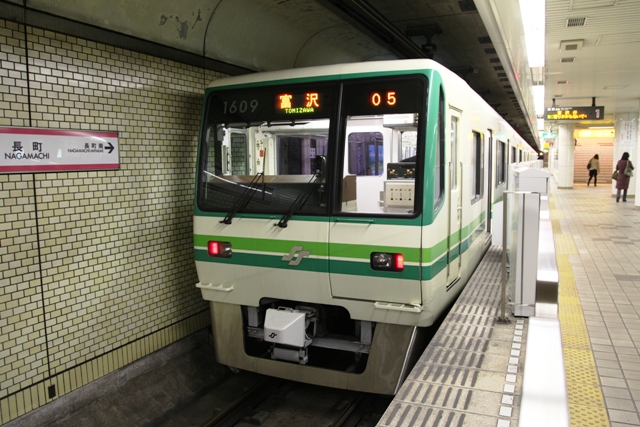If you get around Tokyo, Pasmo or Suica is a must-have card. They are prepaid passes for railway and bus passengers. The function of Pasmo and Suica are the same. The only difference is the issuer. Pasmo is issued by private railway and bus companies, whilst JR East issues Suica. Pasmo and Suica are interoperable; therefore, you just need to make a binary choice.
Once you get a card and deposit some money, you can take almost all railway and bus routes in the Tokyo metropolitan area. It's convenient for shopping as well, because these cards can also be used as electronic money.
Look at the top photo. These are my Pasmo and Suica cards. Since I live along the Odakyu Line, I am a Pasmo holder. This Pasmo is special, because the function of a commuter seasonal ticket is also attached. In this example, I can use this card as a discounted seasonal ticket on the route between Chitose-funabashi Station close to my home and Ootemachi Station near my office. In addition, I can use other railway and bus routes, if I deposit some money in advance. Of course, I can go shopping as well with this card.
I have a Suica also. Why do I have to carry two cards? It's because my Suica is an ID card for admission to my office building. At the entrance, there is a gate, and I need the Suica to pass through there.
Use of Pasmo and Suica is expanding for a number of things.
Once you get a card and deposit some money, you can take almost all railway and bus routes in the Tokyo metropolitan area. It's convenient for shopping as well, because these cards can also be used as electronic money.
Look at the top photo. These are my Pasmo and Suica cards. Since I live along the Odakyu Line, I am a Pasmo holder. This Pasmo is special, because the function of a commuter seasonal ticket is also attached. In this example, I can use this card as a discounted seasonal ticket on the route between Chitose-funabashi Station close to my home and Ootemachi Station near my office. In addition, I can use other railway and bus routes, if I deposit some money in advance. Of course, I can go shopping as well with this card.
I have a Suica also. Why do I have to carry two cards? It's because my Suica is an ID card for admission to my office building. At the entrance, there is a gate, and I need the Suica to pass through there.
Use of Pasmo and Suica is expanding for a number of things.
More information about Pasmo: http://www.pasmo.co.jp/en/index.html
More information about Suica: http://www.jreast.co.jp/e/pass/suica.html





















